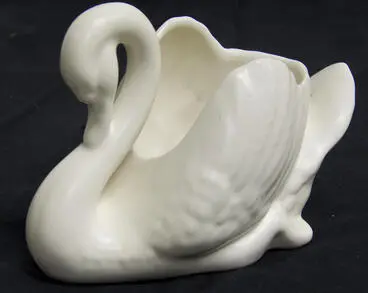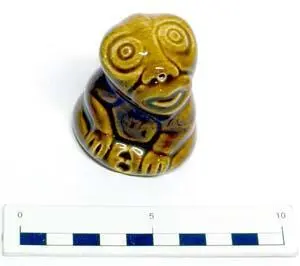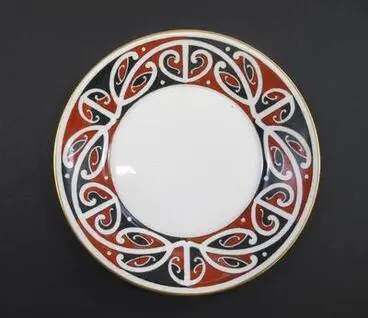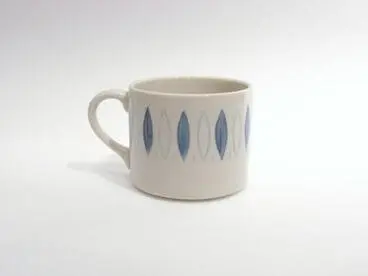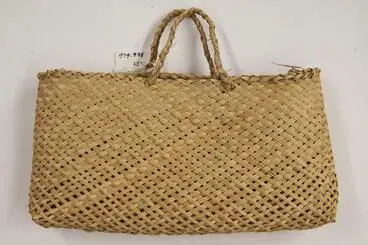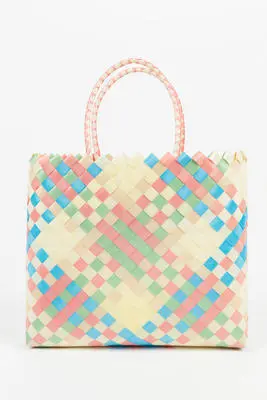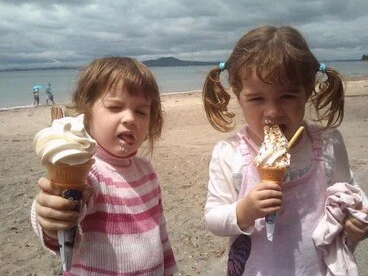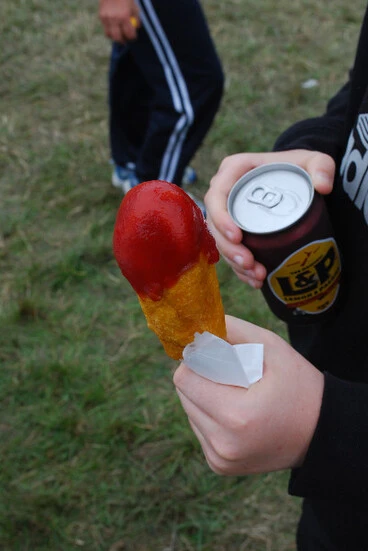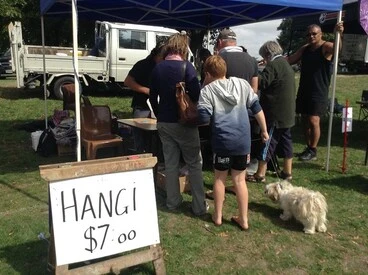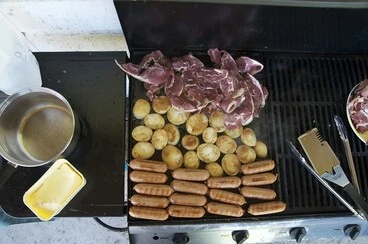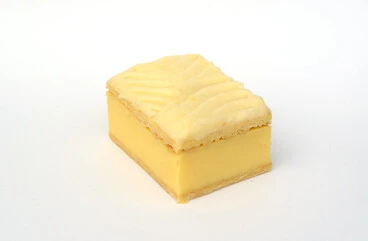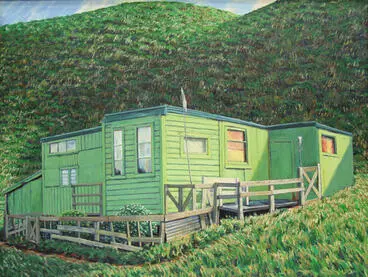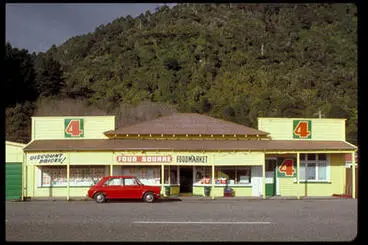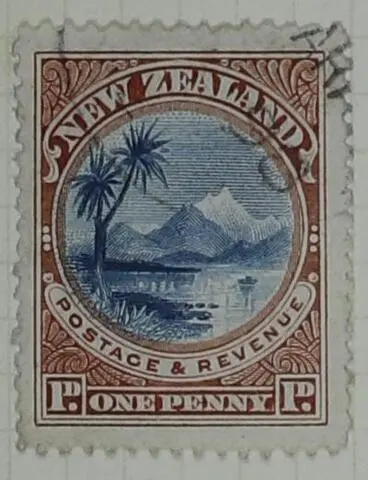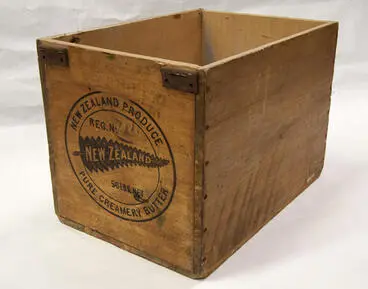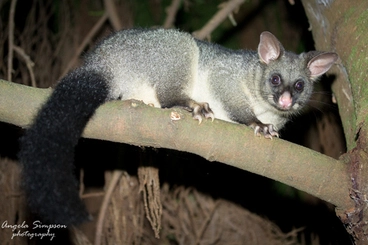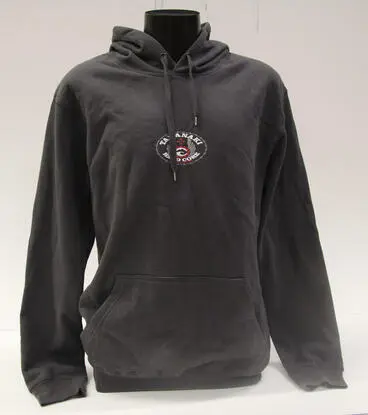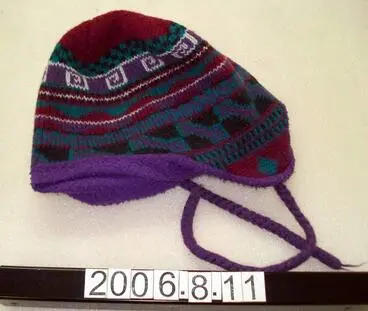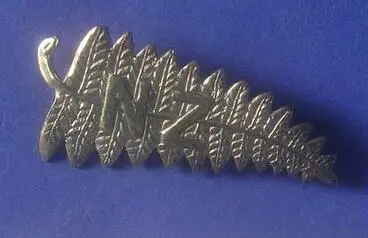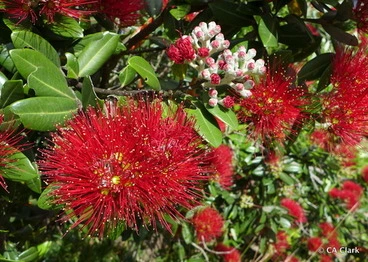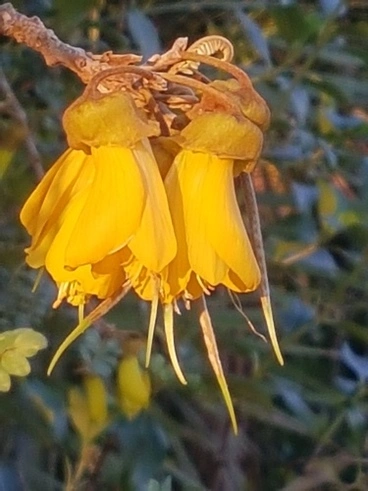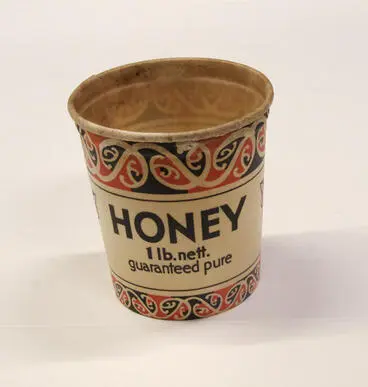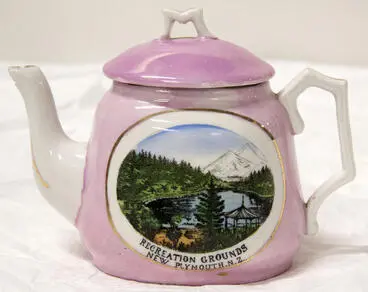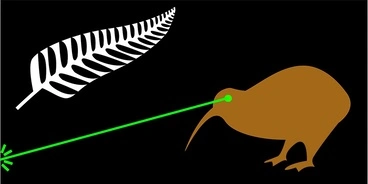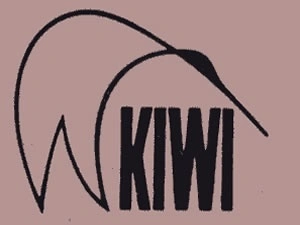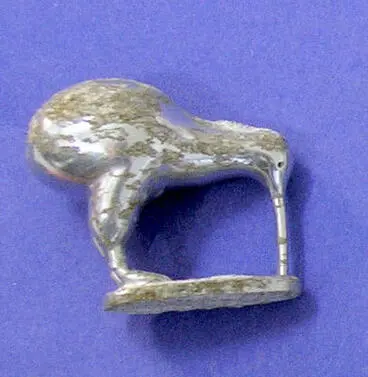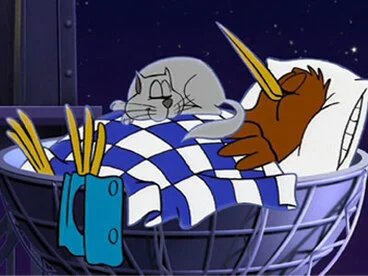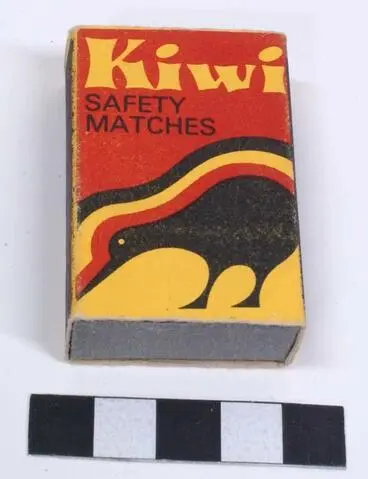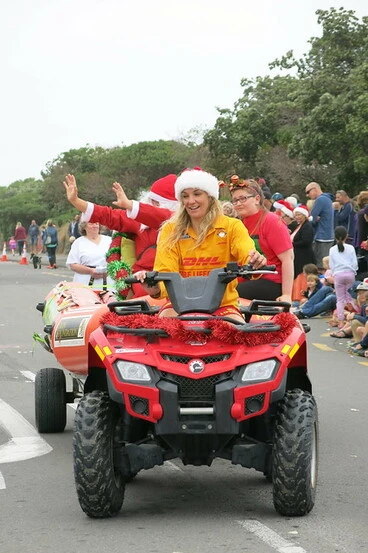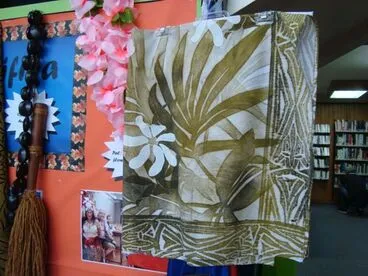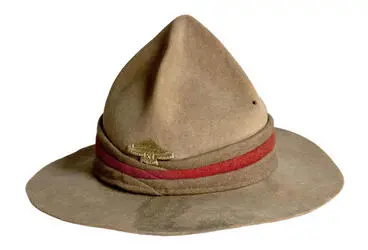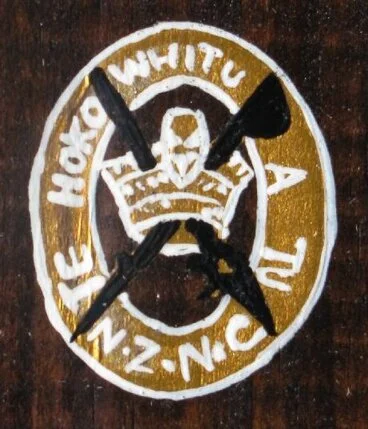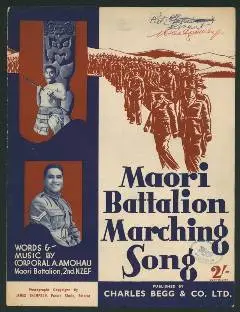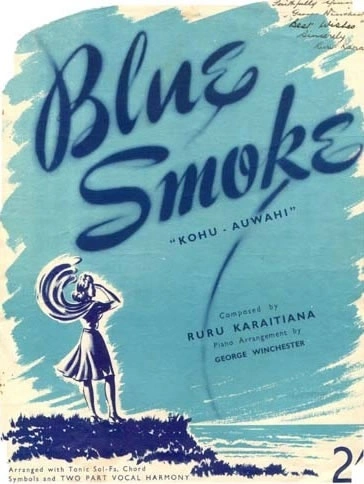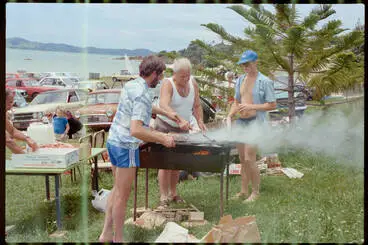Kiwiana images
A DigitalNZ Story by National Library of New Zealand Topics
A celebration of kiwi-produced icons (historic and contemporary) that are a part of New Zealand's unique cultural identity.
Kiwiana
Manatū Taonga, the Ministry for Culture and Heritage
Kiwiana
From the 1980s Pākehā began to explore their distinctive traditions and to argue that New Zealanders had a culture which was neither Māori nor British. There was an interest in ‘kiwiana’ – items of popular culture thought to be unique to New Zealand, such as the pāua-shell ash-tray.
Source: Jock Phillips, 'The New Zealanders - Bicultural New Zealand', Te Ara - the Encyclopedia of New Zealand, http://www.TeAra.govt.nz/en/photograph/3976/kiwiana (accessed 21 January 2020)
'Camp Leader' knitted doll
Museum of New Zealand Te Papa Tongarewa
'Camp Mother' knitted doll
Museum of New Zealand Te Papa Tongarewa
Cup and Saucer
Museum of New Zealand Te Papa Tongarewa
saucer
Auckland War Memorial Museum Tāmaki Paenga Hira
cup
Auckland War Memorial Museum Tāmaki Paenga Hira
Kete
Puke Ariki
Female Pare rito (female rito hat)
Museum of New Zealand Te Papa Tongarewa
Kete
Auckland War Memorial Museum Tāmaki Paenga Hira
[Map of New Zealand history]
National Library of New Zealand
The Four Square man
Manatū Taonga, the Ministry for Culture and Heritage
Hongi
NZEI Te Riu Roa (New Zealand Educational Institute)
Wharenui doorway
Manatū Taonga, the Ministry for Culture and Heritage
Girls Ice Cream Treat
Auckland War Memorial Museum Tāmaki Paenga Hira
Pavlova
Manatū Taonga, the Ministry for Culture and Heritage
Fish and chips
Manatū Taonga, the Ministry for Culture and Heritage
New Zealand Hot Dog and a can of L&P
Manatū Taonga, the Ministry for Culture and Heritage
Hangi
Christchurch City Libraries
Kiwi favourite
Auckland War Memorial Museum Tāmaki Paenga Hira
Kiwi Barbie
Manatū Taonga, the Ministry for Culture and Heritage
Custard Square
Manatū Taonga, the Ministry for Culture and Heritage
‘Fish and chips, Maketu’
Manatū Taonga, the Ministry for Culture and Heritage
"Batch & Urupa"
Puke Ariki
Trampers’ hut
Manatū Taonga, the Ministry for Culture and Heritage
Four Square Foodmarket, West Coast
Auckland War Memorial Museum Tāmaki Paenga Hira
Kiwiana
Manatū Taonga, the Ministry for Culture and Heritage
Ōtorohanga
In 1999 a project to brand Ōtorohanga the 'kiwiana' town of New Zealand was started. This was part of a nationwide trend in which small towns tried to create a name for themselves in the wake of challenging economic conditions and population stagnation and decline. Kiwiana describes distinctively New Zealand objects from times past. These are a sample of the kiwiana icons which are found on the town's main thoroughfares.
Source: Kerryn Pollock, 'King Country places - Ōtorohanga', Te Ara - the Encyclopedia of New Zealand, http://www.TeAra.govt.nz/en/photograph/34647/kiwiana (accessed 21 January 2020)
Stamps
Manatū Taonga, the Ministry for Culture and Heritage
Stamp: New Zealand One Penny
Canterbury Museum
Collecting in the Bay of Islands
Manatū Taonga, the Ministry for Culture and Heritage
Apple poster
Manatū Taonga, the Ministry for Culture and Heritage
Box, Butter
Puke Ariki
Mānuka honey
Manatū Taonga, the Ministry for Culture and Heritage
Dog, from Footrot Flats
Manatū Taonga, the Ministry for Culture and Heritage
Shrek the hermit sheep
Manatū Taonga, the Ministry for Culture and Heritage
Possum
iNaturalist NZ — Mātaki Taiao
Home
Museum of New Zealand Te Papa Tongarewa
Symbols of identity
National identity is also reproduced on a daily basis through national symbols and everyday items. These range from official symbols such as stamps, flags, coins or coats of arms through to trademarks or the popular icons commonly known as ‘kiwiana’.
Source: Fiona Barker, 'New Zealand identity - Symbols of identity', Te Ara - the Encyclopedia of New Zealand, http://www.TeAra.govt.nz/en/new-zealand-identity/page-7 (accessed 23 January 2020)g
Rugby jersey [1924 replica]
Museum of New Zealand Te Papa Tongarewa
Woodleigh School
Puke Ariki
Gumboots
Museum of New Zealand Te Papa Tongarewa
Kiwi 1/4 Acre
Museum of New Zealand Te Papa Tongarewa
Hoodie, Taranaki Hard Core
Puke Ariki
Beanie: Knitted
Canterbury Museum
Summer in Hokianga
Museum of New Zealand Te Papa Tongarewa
Beach cricket
Manatū Taonga, the Ministry for Culture and Heritage
Children's touch
Manatū Taonga, the Ministry for Culture and Heritage
Mau kaki (pendant)
Museum of New Zealand Te Papa Tongarewa
brooch, silver fern
Auckland War Memorial Museum Tāmaki Paenga Hira
Weta
Museum of New Zealand Te Papa Tongarewa
Norman Higgans fishing for whitebait at Pauatahanui Inlet - Photograph taken by Phil Reid
Alexander Turnbull Library
Pate (cricket bat)
Museum of New Zealand Te Papa Tongarewa
Pohutukawa
iNaturalist NZ — Mātaki Taiao
Kowhai
iNaturalist NZ — Mātaki Taiao
Postcard. Red kowhai, Clianthus puniceus / Hilda Wiseman, 1936. Auckland War Memorial Museum postcard.
Alexander Turnbull Library
Container, honey
Puke Ariki
Teapot
Puke Ariki
Webb, Murray, 1947- :All Black Tries [ca 28 November 2004]
Alexander Turnbull Library
[Marching Girls]
Museum of New Zealand Te Papa Tongarewa
United Tribes’ flag: the 1888–89 ‘Native’ rugby team
Manatū Taonga, the Ministry for Culture and Heritage
Flag, Maori
Museum of New Zealand Te Papa Tongarewa
Laser Kiwi flag
Manatū Taonga, the Ministry for Culture and Heritage
Kiwi
Native birds were also quickly adopted as symbols. In the colonial period the moa was a pre-eminent symbol of the country – but from the early 20th century the kiwi was the dominant symbol. During the First World War New Zealand soldiers became known as ‘Kiwis’. This soon spread to become the common name for all New Zealanders and an adjective applied to all things New Zealand. Even the country’s currency became known as the kiwi. In 2011 the dollar coin featured a kiwi and ferns.
Source: Fiona Barker, 'New Zealand identity - Symbols of identity', Te Ara - the Encyclopedia of New Zealand, http://www.TeAra.govt.nz/en/new-zealand-identity/page-7 (accessed 23 January 2020)g
First use of kiwi as unofficial national symbol?
Services to Schools
Kiwi CND badge
Museum of New Zealand Te Papa Tongarewa
Kiwi Records
Manatū Taonga, the Ministry for Culture and Heritage
kiwi ornament
Auckland War Memorial Museum Tāmaki Paenga Hira
Goodnight Kiwi Christmas
NZ On Screen
Matchbox
Puke Ariki
New Zealand International Arts Festival
Manatū Taonga, the Ministry for Culture and Heritage
Other examples of Kiwiana
Toy tractor with trailer
Museum of New Zealand Te Papa Tongarewa
Father Christmas
Christchurch City Libraries
Caravans
Manatū Taonga, the Ministry for Culture and Heritage
Brother Ken, bro'Town
Manatū Taonga, the Ministry for Culture and Heritage
Selwyn College 'ie lavalava
Museum of New Zealand Te Papa Tongarewa
Lei
Museum of New Zealand Te Papa Tongarewa
Anzac poppy
Museum of New Zealand Te Papa Tongarewa
Te Hokowhitu a Tū insignia
Manatū Taonga, the Ministry for Culture and Heritage
Ake Ake Ake Kia Kaha e
Manatū Taonga, the Ministry for Culture and Heritage
Blue smoke
Manatū Taonga, the Ministry for Culture and Heritage
The Flying Nun label
Manatū Taonga, the Ministry for Culture and Heritage
Minarets sheep station, New Zealand
Museum of New Zealand Te Papa Tongarewa
Kowhaiwhai
Museum of New Zealand Te Papa Tongarewa
Māori
Māori designs were used quite often on 19th-century publications, especially tourist books. They also became common on trademarks and stamps. The $50 banknote featured early-20th-century Ngāti Porou politician Āpirana Ngata. A piece of pounamu (greenstone), often carved, became a common item of dress distinguishing Kiwis overseas in the late 20th century, and designs with koru elements were important in the branding of many public agencies.
Source: Fiona Barker, 'New Zealand identity - Symbols of identity', Te Ara - the Encyclopedia of New Zealand, http://www.TeAra.govt.nz/en/new-zealand-identity/page-7 (accessed 23 January 2020)g
Kahui rere - Ngarauru
Museum of New Zealand Te Papa Tongarewa
Hei Matau (fish hook)
Museum of New Zealand Te Papa Tongarewa
First series of banknotes: £50
Manatū Taonga, the Ministry for Culture and Heritage
Mamaku koru
Manatū Taonga, the Ministry for Culture and Heritage
Koru, 1, 2, 3
Museum of New Zealand Te Papa Tongarewa
Sellebration
Services to Schools

